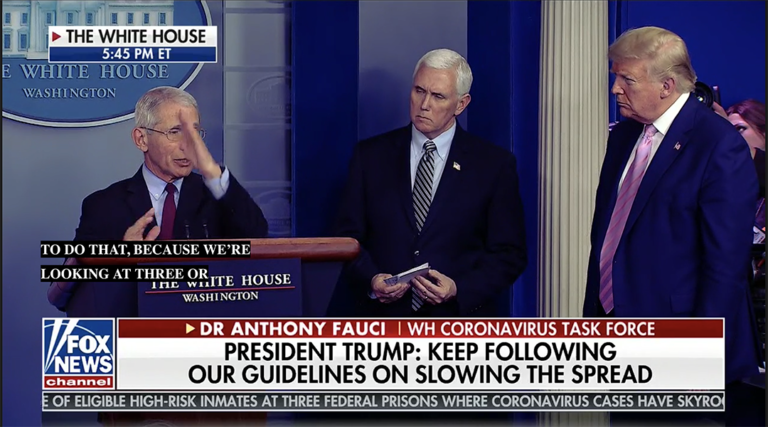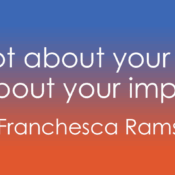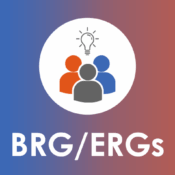
Inaccessibility Does Not Help Flatten the Curve
As the coronavirus pandemic has captured international headlines over the several months, millions have taken access to regular updates about the pandemic through the National Public Radio (NPR), televised press conferences and social media for granted, all while not necessarily thinking about how others may be frustrated due to the lack of accessibility.
Unfortunately, the coronavirus pandemic has been the latest in a long series of events that has incessantly shone its light on how ill-prepared our country is to make information wholly accessible to marginalized populations, including the Deaf and hard of hearing community.
At the epicenter of this dilemma is the inaccessibility of federal, state and local government officials’ press conferences regarding Coronavirus Disease 2019 (COVID-19) to Deaf and hard of hearing individuals.
During many press conferences, no American Sign Language (ASL) interpreters were present. In situations where an interpreter was present for a press conference, they were not visible on the screen of the televised broadcast or live stream on social media. There were also situations where unqualified and/or non-certified interpreters were used during press conferences, as well as substandard captions being displayed on the major networks and via social media feeds.
These frustrating instances have drawn the attention of the Deaf and hard of hearing community, and advocates have responded accordingly.
In a March 18th letter to Stephanie Grisham, the director of communications at the White House, the National Association of the Deaf CEO Howard Rosenblum requested immediate action be taken to ensure every public briefing has a qualified ASL interpreter present and visible on the screen of the broadcast.
As the federal government’s inaccessibility also extended to pre-recorded content, Mr. Rosenblum also requested the White House direct the Department of Health and Human Services, as well as their Centers for Disease Control, to immediately make all information related to COVID-19 on their websites available in ASL.
Several weeks later, despite the declaration of a national state of emergency, all press conferences with President Donald Trump and the White House Coronavirus Taskforce have yet to include an interpreter.

Furthermore, several astounding examples of blatant inaccessibility are evident with the White House's continuous release of videos pertaining to coronavirus pandemic on social media with President Trump, the U.S. Surgeon General and other members of the taskforce, Most of these videos are not captioned and none have an interpreter present.
Unfortunately, the lack of preparedness and inaccessibility is rampant in the private sector, as well.
As businesses have closed or modified operations, many have taken to social media to conduct live streams or distributed pre-recorded videos regarding COVID-19. It is unfortunate that many of these videos were not captioned.
Webcasts have also been inaccessible. On February 25th, when the market’s volatility increased in response to the pandemic, Fidelity sent an email to their clients regarding a webcast, “The Latest Market Conditions and Your Portfolio.” As there was no information to be found regarding the webcast’s accessibility via a sign language interpreter or captions, I reached out to Fidelity via Twitter.
In short, their response was, “we’ll have a transcript after 3-4 days.”
But why? The technology to live caption and include an ASL interpreter is readily available and easily accessible.
In the aforementioned scenarios, members of my community, as well as the hearing loss community, did not have immediate access to pertinent information pertaining to COVID-19.
It is concerning when this content does not effectively reach older adults, a population amongst those most vulnerable to COVID-19. As this population is affected by age-related hearing loss, the hearing loss community’s concerns during this stressful are compounded by organizations continuing to release inaccessible content, including those pertaining to health-related information and retirement accounts.
The National Institutes of Health reports approximately 1 in 3 people between the ages of 65 and 74 have hearing loss, and nearly half of people over the age of 75 have a hearing loss. More likely than not, these individuals do not utilize American Sign Language (ASL) as their primary or preferred mode of communication. To ensure video-based content effectively reaches this very audience, captioning for live and pre-recorded videos are necessary.
Alternatively, DeafBlind individuals, while not necessarily susceptible to COVID-19, are also vulnerable populations due to the lack of immediate access to accurate information, support and resources. DeafBlind individuals may prefer to have access to professional support service providers and/or designated DeafBlind interpreters, as well as transcripts that are readily available. Nonetheless, it is critical to emphasize that during a shelter-in-place order, the latter of the three options would only benefit those that have Internet access at home and can read braille.
Consequently, it is times like this current pandemic where the lack of initial preparedness is magnified.
This illustrates that many continue to miss the overarching point: regardless if content is distributed, it is not always accessible.
If our immediate response is, “all of this is too much work,” we must remind ourselves that we cannot let our respective privileges or ableist attitudes to creep in.
The vicious cycle of continuing with the status quo of “waiting until later” is ill-fated. We’ve been down this road one too many times, and now we’re seeing organizations simply playing catch-up again. And during this process, marginalized populations are being further marginalized.
It’s time we look beyond simply “accommodating” a marginalized population, but approach the topic with the mindset of being fully accessible to all individuals from the very beginning.



